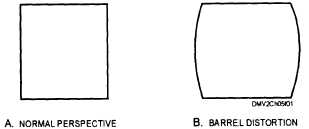Perspective
Introduction
Two types of projections or methods of realistically representing objects on a
page are parallel projection and perspective or central projection. Parallel
projection is used for technical drawings and blueprints and is covered in the
next chapter. Perspective or central projection is used in creative art or
technical sketching but seldom in technical drawing.
Perspective or
Perspective projection, sometimes called central projection, is the method by
central
which artists realistically portray three-dimensional objects on a two-
projection
dimensional plane. Perspective or central projection is, in theory, where
objects are drawn on a page by extending lines of sight called projectors from
the eye of the observer through lines and points on the object to the plane of
projection. The resultant drawing is always called a central projection
because the lines of sight or projectors meet at a central point -the eye of the
observer. The projected view of the object may vary considerably in size
according to the relative positions of the objects and the plane of projection.
Varying from natural perspective distorts images into abstract or expressive
representation.
Perspective alone will not effectively create the illusion of
three dimensions without tone or shading. In photography, perspective
dominates. Although scene replication is almost exact, photography has
crucial limitations regarding field of view. The human eye sees wide and far
but the photographic lens has field of view limitations that even with
corrective lenses results in distortion.
Corrective wide-angle lenses typically
result in distortion called barrel distortion, where the lines parallel to the
sides of the picture frame bow inward at the center.
Figure 5-1 illustrates the effect of barrel distortion.
Figure 5-1.—Differences in a cube exhibiting:
A. Normal perspective, and B. Barrell distortion.
Continued on next page
5-3


